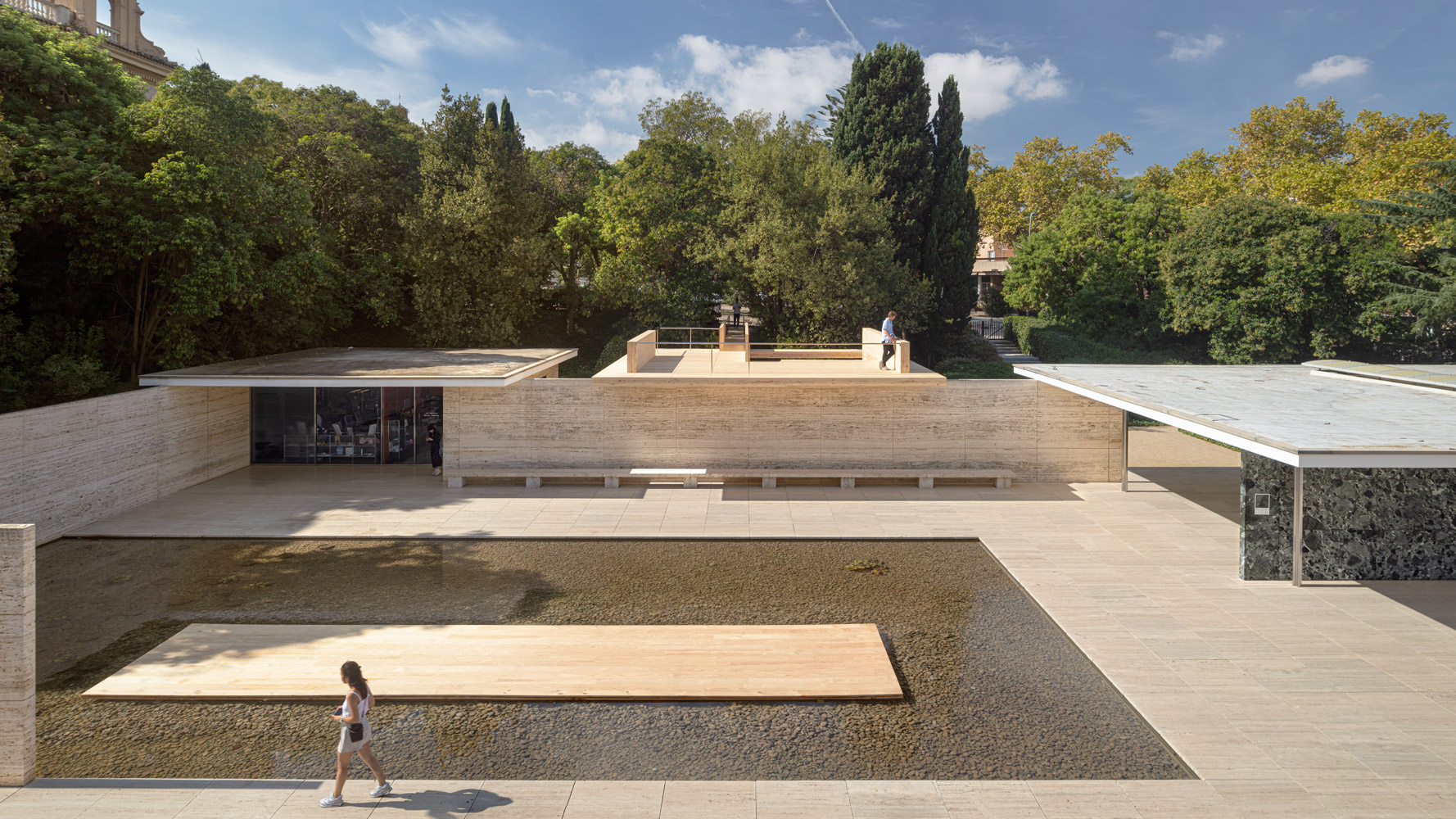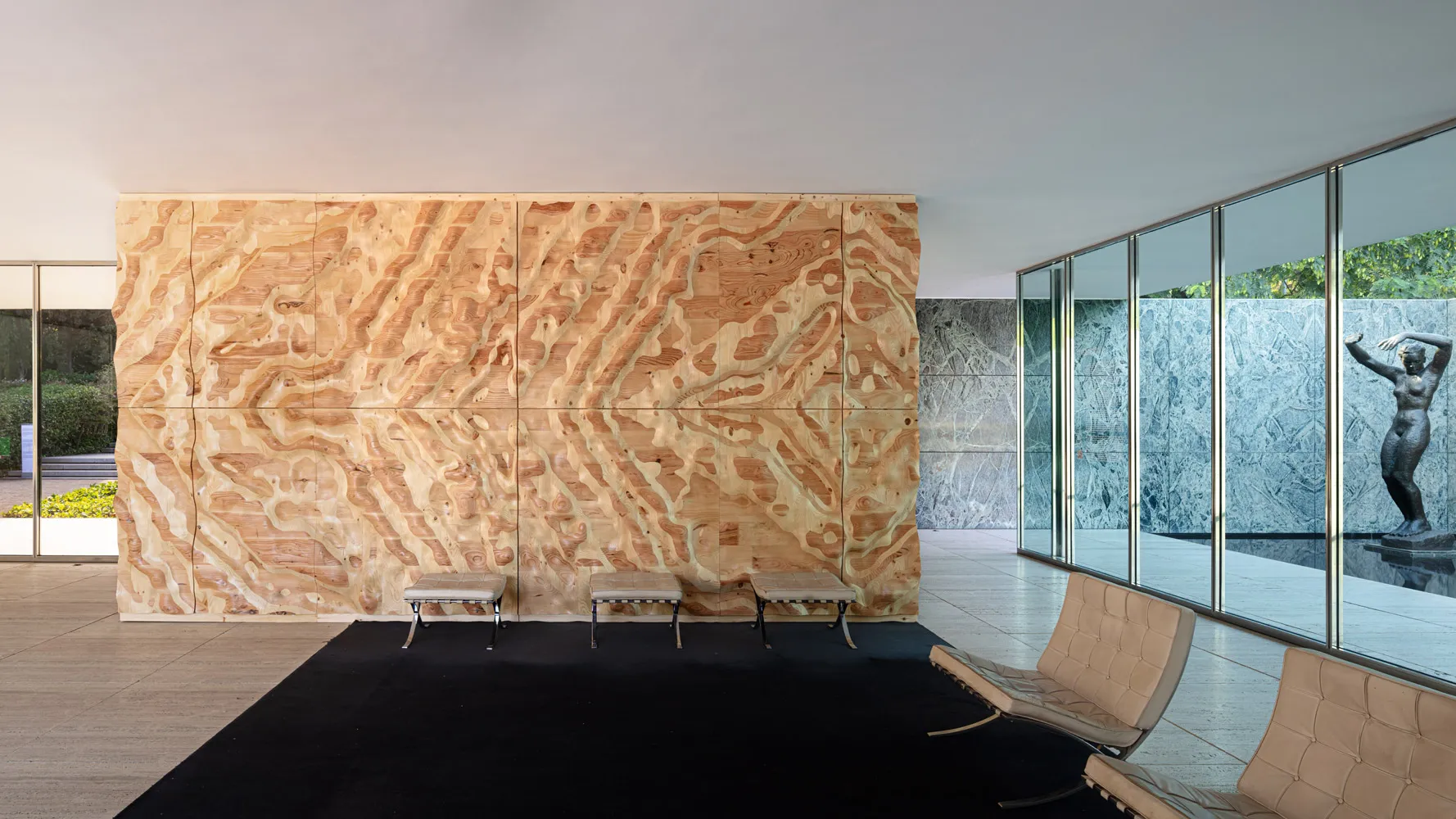Mies’s Barcelona Pavilion Reinterpreted in Carbon-Saving Wood

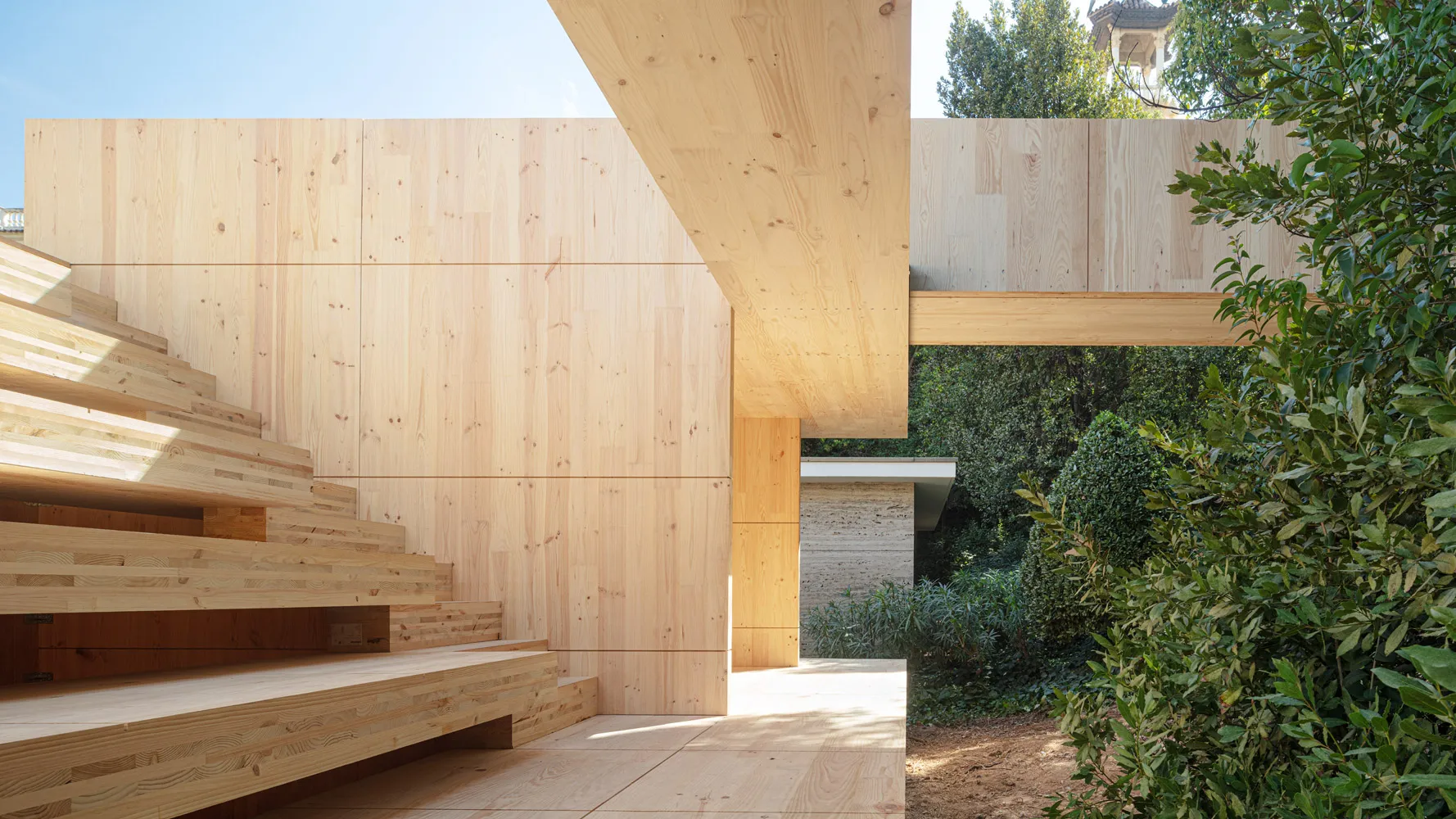
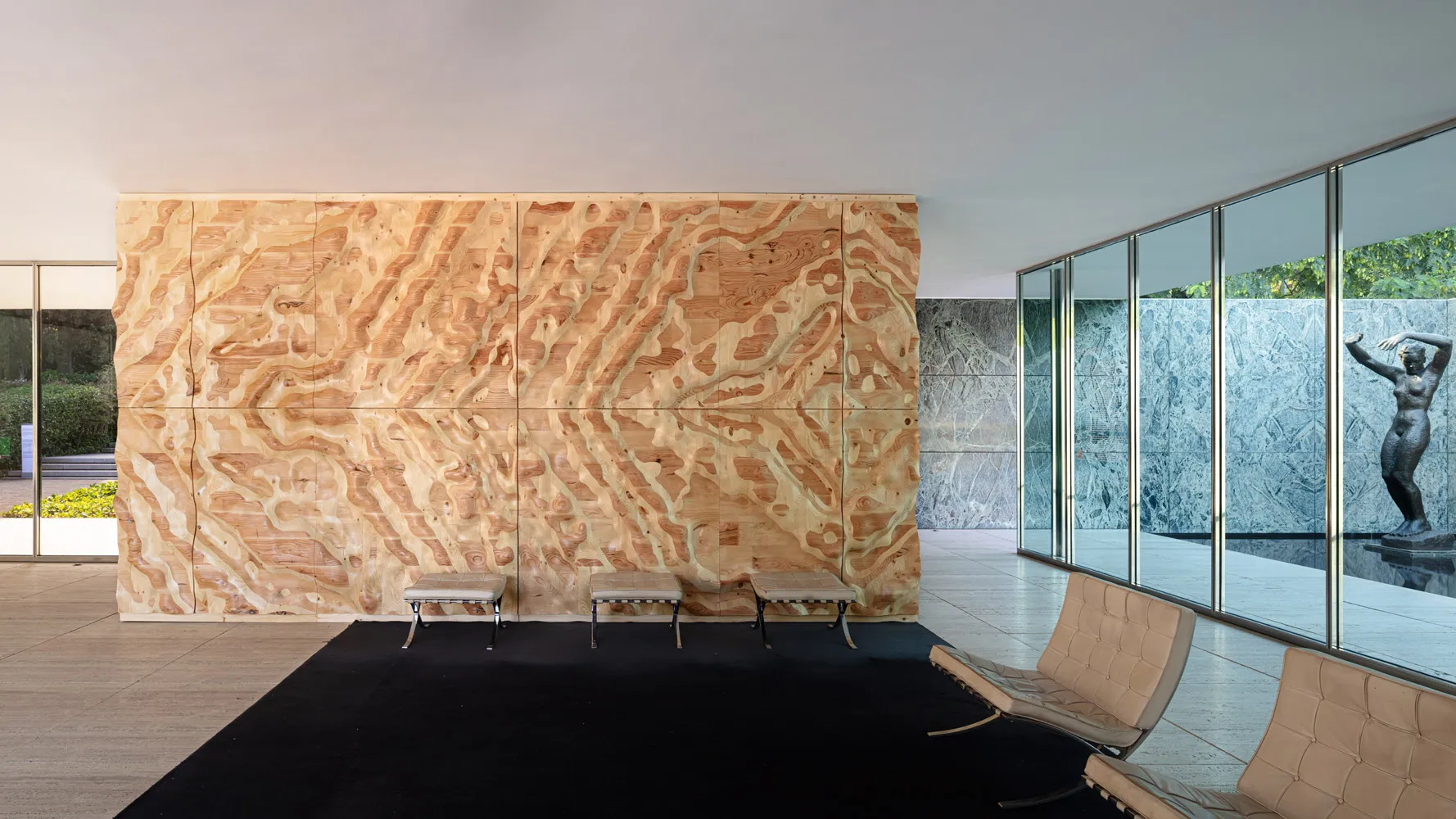
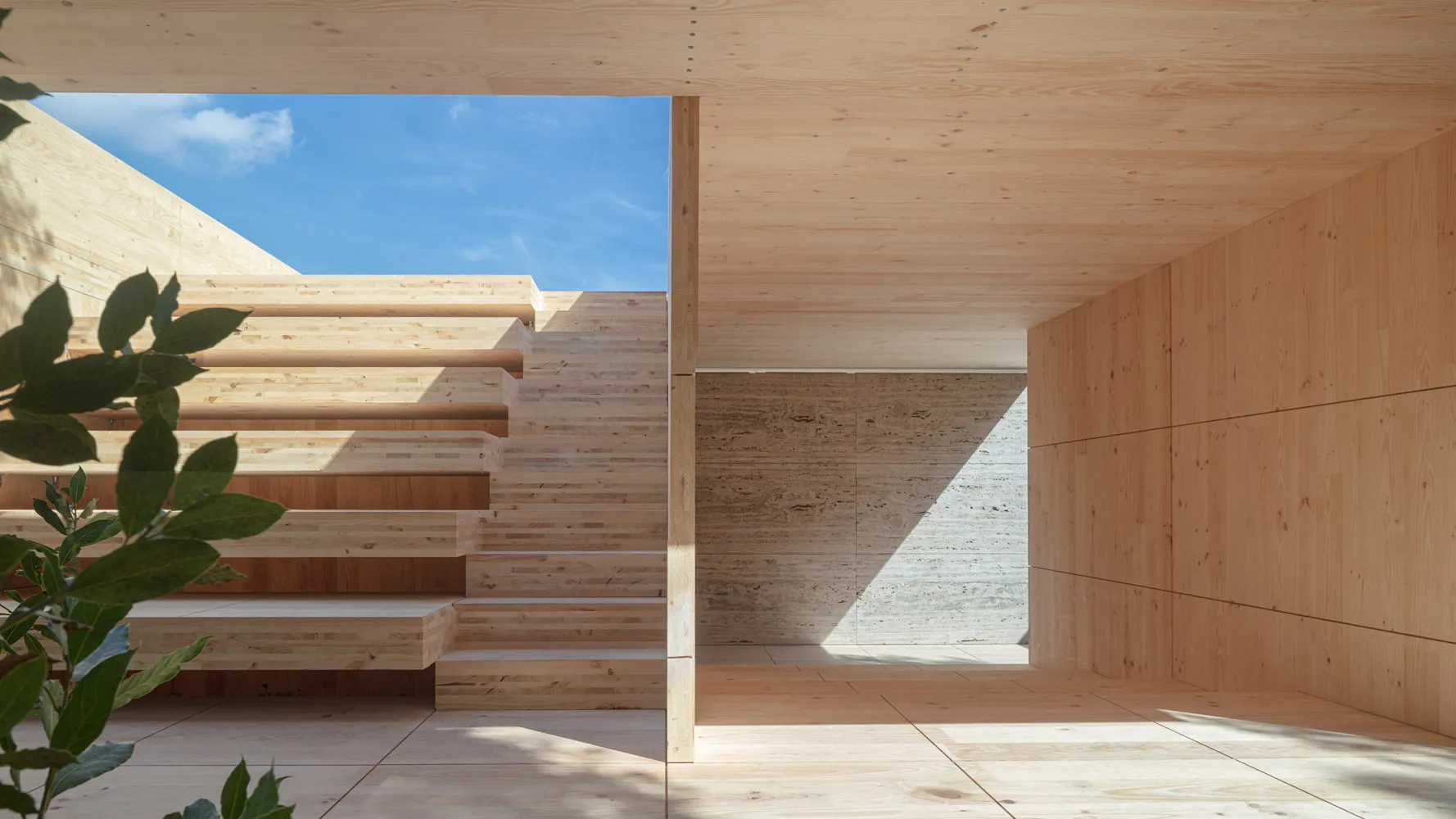

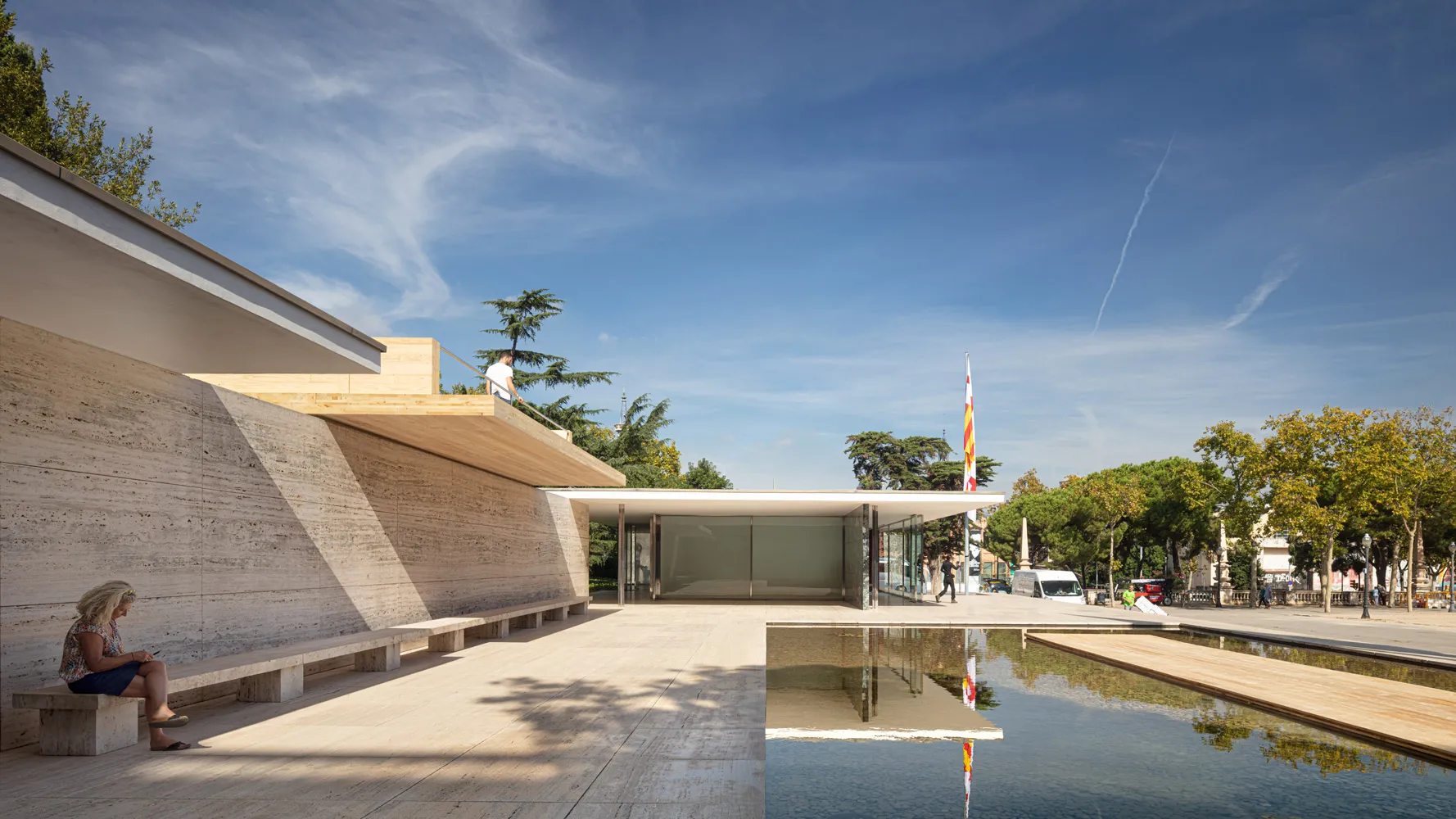
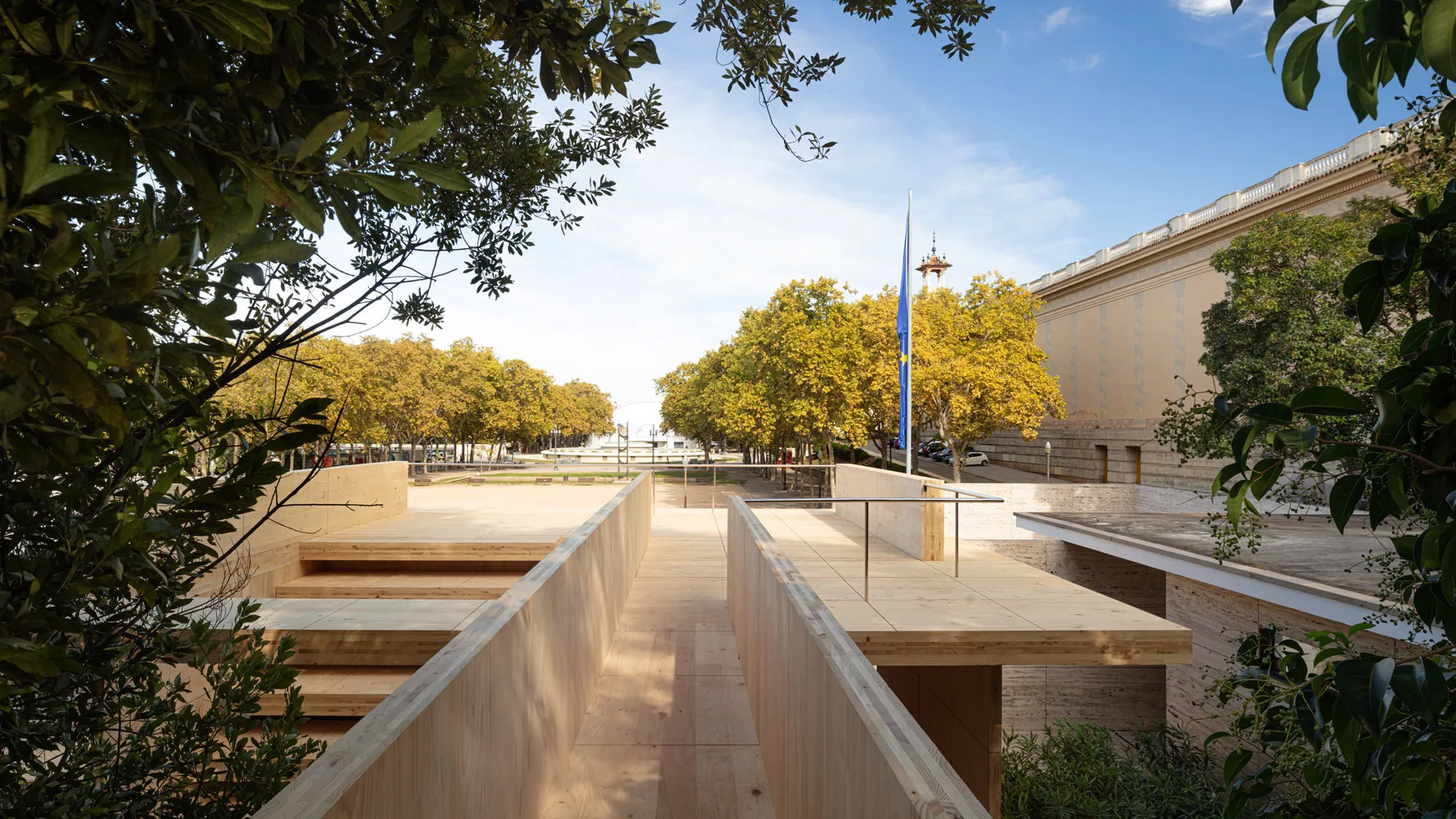
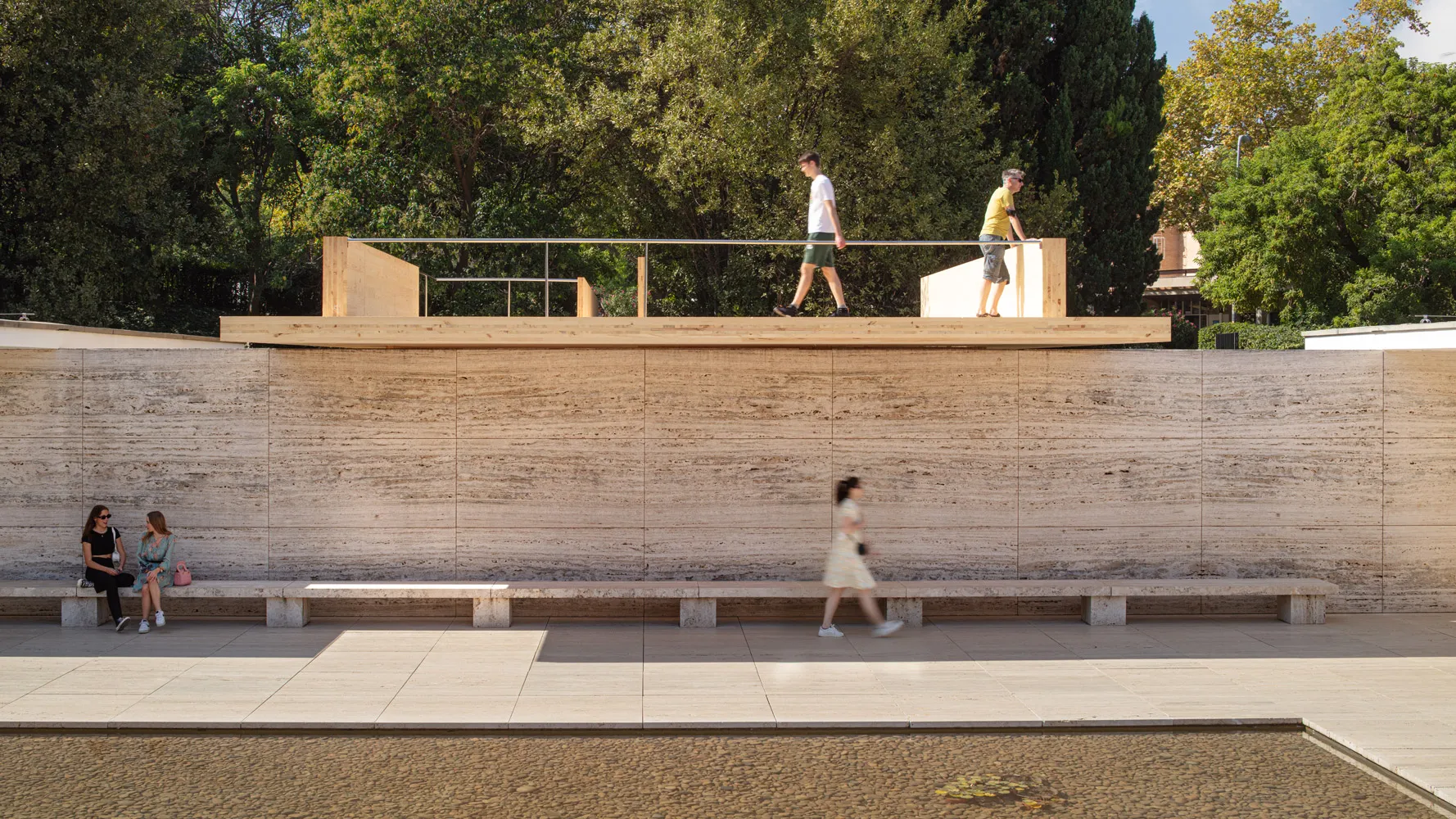








Mies van der Rohe’s Barcelona Pavilion, built for that city’s 1929 International Exhibition, has been celebrated for its elegant use of stainless steel, marble and glass. But what were the environmental consequences of Mies’s material choices? For the next 10 days, visitors to the pavilion (which was dismantled in 1930 and recreated in the 1980s) will be forced to consider that question, thanks to an installation that mimics, hugs and overlooks Mies’s masterwork but is made entirely of timber—specifically, cross-laminated timber (CLT) from Galician forests. They’ll also get to see a flamenco dancer perform on a CLT stage in Mies’s reflecting pool.
Alan Organschi, a Yale architecture professor and partner in the New Haven firm Gray Organschi Architecture, worked with Vicente Guallart and Daniel Ibañez of Institute for Advanced Architecture in Catalonia (IAAC) on the design of the pavilion. Organschi, who said his goal was to promote “the use of buildings as a global carbon sink,” also worked with a team from Bauhaus Earth (a Berlin-based network of researchers that he has helped found while on leave from Yale) to perform a life cycle analysis (LCA) for each component of Mies’s building and for equivalent components made of timber.

CLT wall panels meets Mies’s travertine floor. Photo © Adrià Goula
“LCA is an incredibly tricky system of analysis,” Organschi says. “A lot of stuff is contested.” Even so, he says, the impact on atmospheric carbon of using timber in place of concrete or steel is clear. For example, Organschi’s team determined that extraction, fabrication and transportation of components of Mies’s onyx wall resulted in the emission of 652 kg of CO2, while a CLT panel meeting the same specifications removed 358 kg of CO2 from the atmosphere. But obtaining that benefit, experts agree, requires long-term forest management, restoration and expansion.
So was Mies bad for the environment? “By his standards, and the standards of his time, he was quite efficient, tectonically,” Organschi says. “He didn’t know that, with his incredible influence, he was going to cause an explosion of resource extraction–gypsum, limestone, portland cement, iron ore, all of the constituent minerals that go into steel and concrete. It’s had a huge impact globally.”
Organschi says that, despite the promise of timber, it’s “only one piece of the puzzle. Another piece is making buildings that last longer. We have to be a bit more austere in our use of materials. And we have to stop tearing down buildings.”
The pavilion—built of CLT donated by a Galician timber company and supported by a variety of public and private entities—coincides with a conference on bio-materiality in the building sector sponsored by the European Forestry Institute. After it comes down next week, it will move to a number of other sites in Spain. But only this site marks a turning point in the history of architecture, and in its environmental consequences.

Installation of "onyx" CLT wall panels in process. Photo courtesy of Vicente Guallart, IAAC




